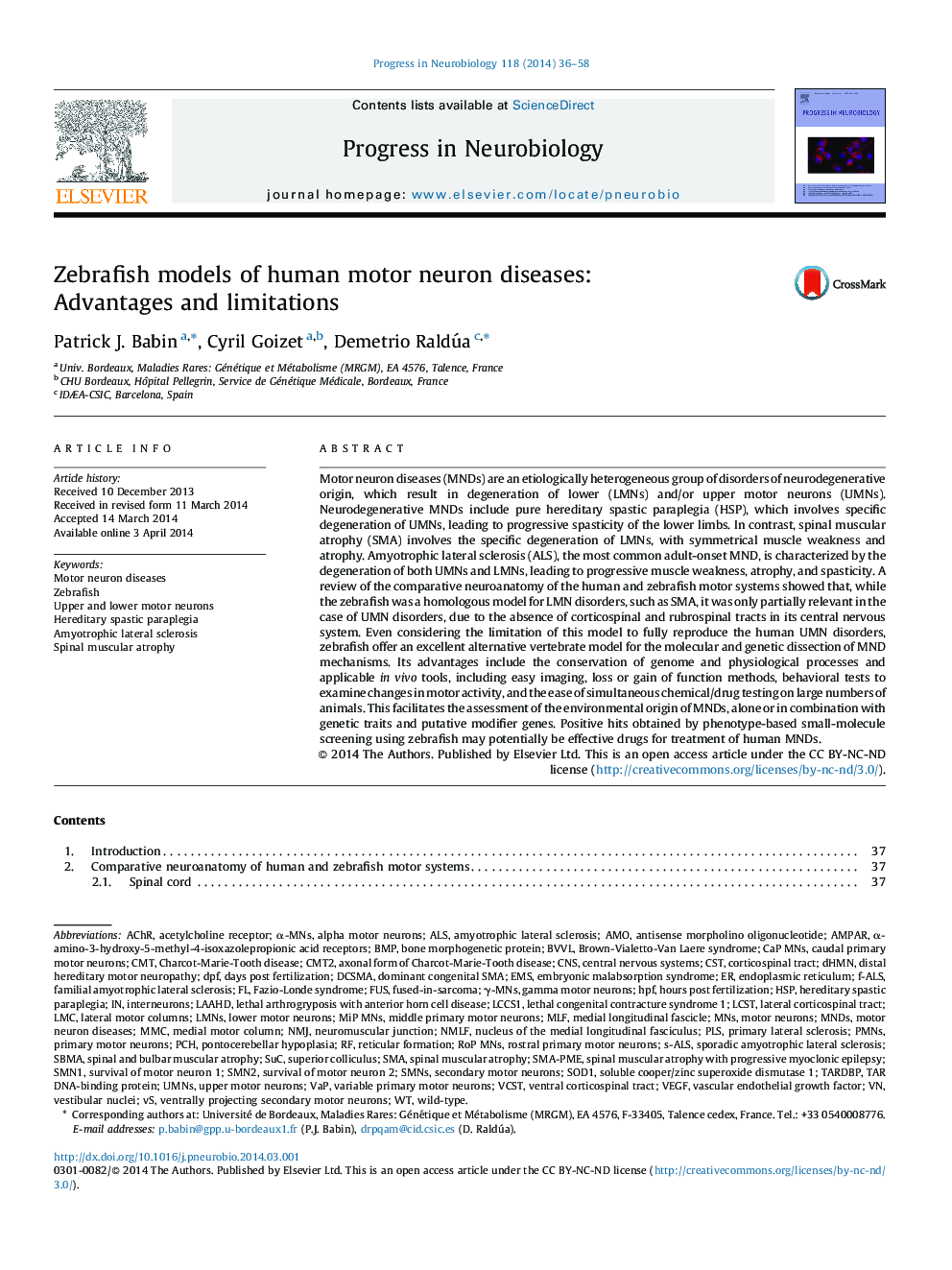| کد مقاله | کد نشریه | سال انتشار | مقاله انگلیسی | نسخه تمام متن |
|---|---|---|---|---|
| 6286516 | 1615391 | 2014 | 23 صفحه PDF | دانلود رایگان |

- Zebrafish offer an excellent alternative vertebrate model for studying motor neuron diseases.
- It is suitable for exploring the functional effects of human mutations and environmental factors.
- It represents a good predictive model for identifying chemical suppressors of human diseases.
Motor neuron diseases (MNDs) are an etiologically heterogeneous group of disorders of neurodegenerative origin, which result in degeneration of lower (LMNs) and/or upper motor neurons (UMNs). Neurodegenerative MNDs include pure hereditary spastic paraplegia (HSP), which involves specific degeneration of UMNs, leading to progressive spasticity of the lower limbs. In contrast, spinal muscular atrophy (SMA) involves the specific degeneration of LMNs, with symmetrical muscle weakness and atrophy. Amyotrophic lateral sclerosis (ALS), the most common adult-onset MND, is characterized by the degeneration of both UMNs and LMNs, leading to progressive muscle weakness, atrophy, and spasticity. A review of the comparative neuroanatomy of the human and zebrafish motor systems showed that, while the zebrafish was a homologous model for LMN disorders, such as SMA, it was only partially relevant in the case of UMN disorders, due to the absence of corticospinal and rubrospinal tracts in its central nervous system. Even considering the limitation of this model to fully reproduce the human UMN disorders, zebrafish offer an excellent alternative vertebrate model for the molecular and genetic dissection of MND mechanisms. Its advantages include the conservation of genome and physiological processes and applicable in vivo tools, including easy imaging, loss or gain of function methods, behavioral tests to examine changes in motor activity, and the ease of simultaneous chemical/drug testing on large numbers of animals. This facilitates the assessment of the environmental origin of MNDs, alone or in combination with genetic traits and putative modifier genes. Positive hits obtained by phenotype-based small-molecule screening using zebrafish may potentially be effective drugs for treatment of human MNDs.
Journal: Progress in Neurobiology - Volume 118, July 2014, Pages 36-58